■ Previous GM Sound Source Series
GM Sound Source 01: Ancient GM Sound Sources
GM Sound Source 02: Piano Category
GM Sound Source 03: Chromatic Percussion Category
The Organ category in GM sound sources is relatively easy to handle in MIDI programming. However, instruments like the accordion and harmonica require an understanding of their structure to express their authentic sound properly. Below is a video compilation of sample sounds. Please check them out to hear how they sound.
Organ (Drawbar Organ)
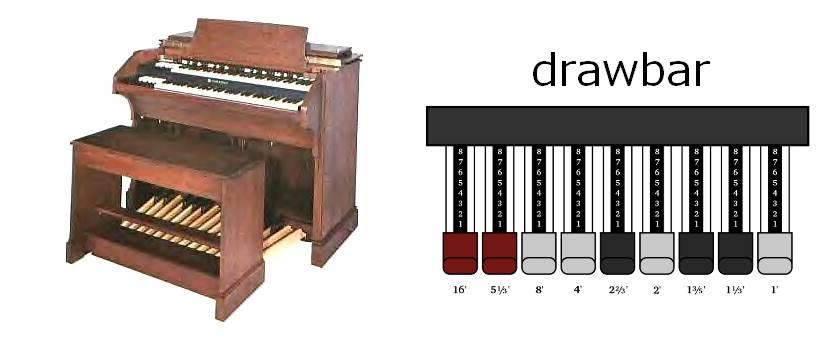
右:The sound on a Hammond is varied using drawbars, similar to faders on an audio mixing board (Quoted from Wikipedia)
In GM2, the drawbar organ (electric organ) is specified. Originally, drawbars were overtone control levers used in pipe organs. Since early electric organs were designed as substitutes for pipe organs, they also adopted drawbars—the most famous example being the Hammond organ.
The Hammond organ generates pitch using rotating tonewheels, converting these vibrations into electrical signals through electromagnetic pickups, which are then output to an amplifier. It also allows for various tonal modifications using electronic mechanisms. However, as transistor technology advanced, the large, heavy, and expensive Hammond organ gradually declined in popularity.
017 000 Organ 1 - Range: C2-C7
An electric organ sound that closely mimics a real pipe organ, making it a versatile and traditional organ tone.
017 001 Detuned Or. 1 - Range: C2-C7
A beating sound created by overlapping slightly different frequencies. However, it has fewer overtones and a softer tone, making it quite different from Organ 1. It has a distinctive sound separate from the pipe organ.
017 002 Organ 60 - Range: C2-C6
This one stands out as an outlier, not resembling a Hammond organ. It seems to be a 1960s transistor organ with a frequency-divider circuit, likely something like the VOX Jaguar Combo Organ Model V. GM2 recommends Italian 60’s Organ as a reference.
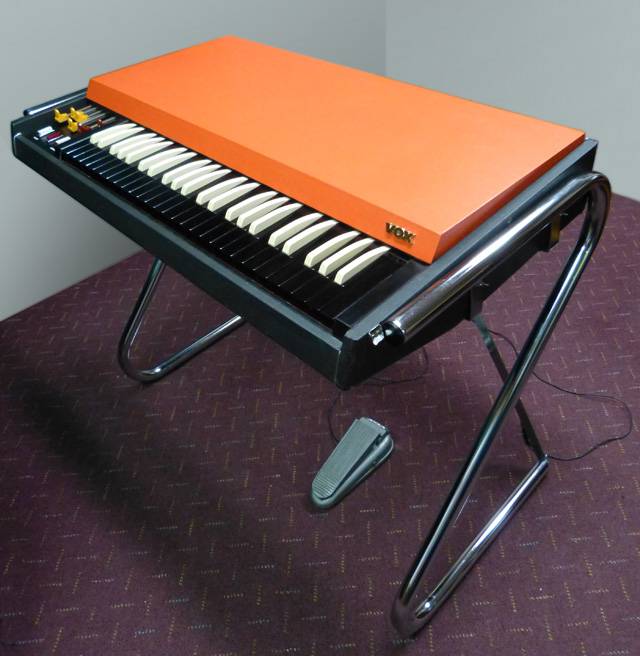
Vox Continental Docrobbie - Own work CC BY-SA 4.0 (Sourced from Wikipedia)
017 003 Organ 4 - Range: C2-C7
A mellower sound with fewer overtones compared to Organ 1.
Organ 2 (Hammond Organ with Percussion)
The percussion feature unique to the Hammond organ is activated in this setting. A sharp attack sound (“click”) is added, giving the tone a crisper quality. This sound is created through the discharge of a capacitor, making it distinct from a pipe organ. Because of its sharp and rhythmic nature, it is favored in jazz and rock music.
018 000 Organ 2 - Range: C2-C7
A standard percussive organ sound.
018 001 Detune Or. 2 - Range: C2-C7
Similar to Organ 2, but with a beating effect in the sound.
018 002 Organ 5 - Range: C2-C6
A brighter variation of Organ 2.
Organ 3 (Hammond Organ with Leslie Speaker)
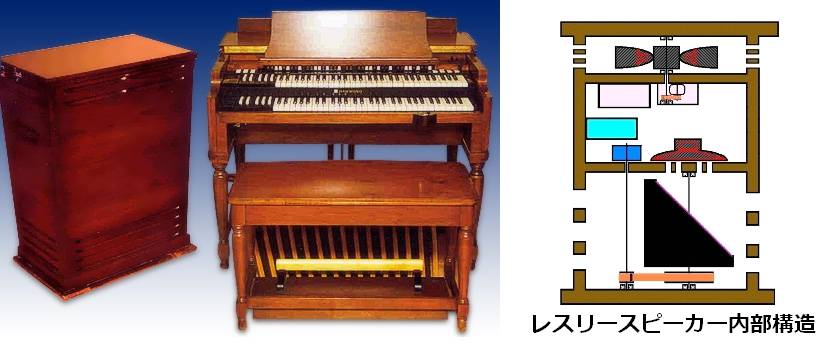
Left: Hammond B-3 and Leslie Speaker, Salli - Own work, CC BY-SA 3.0, ( Sourced from Wikipedia)
Right: Leslie Speaker Diagram, Berndt Meyer - Own work, CC BY-SA 3.0, ( Sourced from Wikipedia)
019 000 Organ 3 - Range: C2-C7
GM2 describes this as a rock organ. The sound is a Hammond organ connected to a Leslie speaker, where the rotating speaker produces a chorus effect, creating a unique, expansive sound. This type of organ was used by Jon Lord (Deep Purple) and Keith Emerson (ELP).
Church Organ
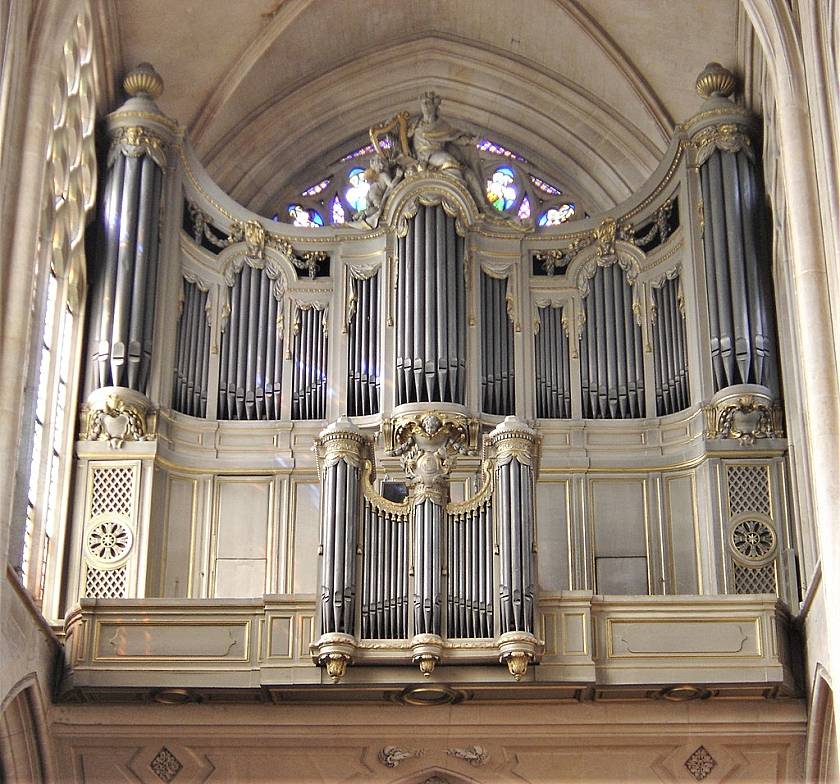
A pipe organ installed in churches and similar venues. Since these organs are built into the architecture, the building’s acoustics heavily influence the sound. The reverb effect is an essential part of the sound, making ensemble use challenging. The TTS-1 provides three variations, all with similar basic tones, but differing in harmonic structure.
020 000 Church 1 - Range: A0-C8
Standard church organ sound.
020 001 Church 2 - Range: A0-C8
Produces deep, rumbling bass like earthquakes.
020 002 Church 3 - Range: A0-C8
Has a more subdued low range, making it easier to blend in an ensemble.
Reed Organ
021 000 Reed Organ - Range: C2-C7
A pedal organ commonly found in old schools, producing a rustic sound. Uses free reeds for sound generation.
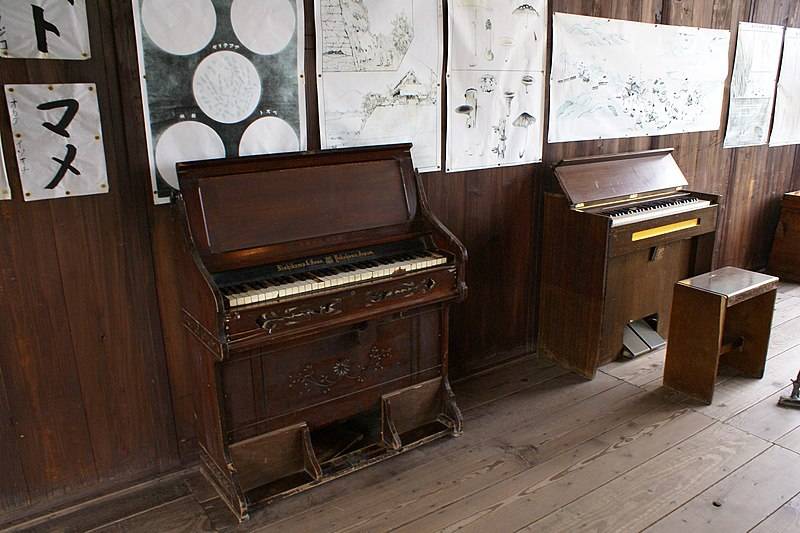
School Organ (24 Eyes Movie Village) - 663highland, Own work, CC BY 2.5 (Sourced from Wikipedia)
021 001 Puff Org. - Range: F3-F6
It is a small pipe organ that produces a sound similar to a street organ (barrel organ) like the one shown in the image below. A street organ is a musical instrument that plays music recorded on a music roll by turning a crank, eliminating the need for a specially trained performer. It has a charming, fairytale-like sound.
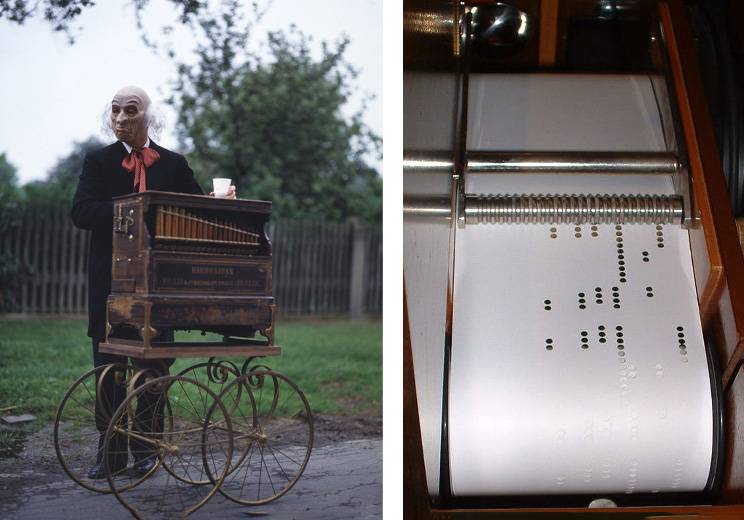
Left: Drehorgel, Germany, barrel organ, CC BY-SA 3.0 (Sourced from Wikipedia)
Accordion
The accordion produces sound using free reeds and a bellows mechanism. In MIDI programming, attention must be given to volume changes and breathing effects for realism. The keyboard or button layout affects playing style. The right-hand keys produce individual notes, but the left-hand buttons control bass and chords, making it more complex than it appears.
022 000 Accordion F (French) - Range: F3-F6
French-style accordion in TTS-1.

022 001 Accordion I (Italian) - Range: F3-F6
Italian-style accordion, with a warmer tone.
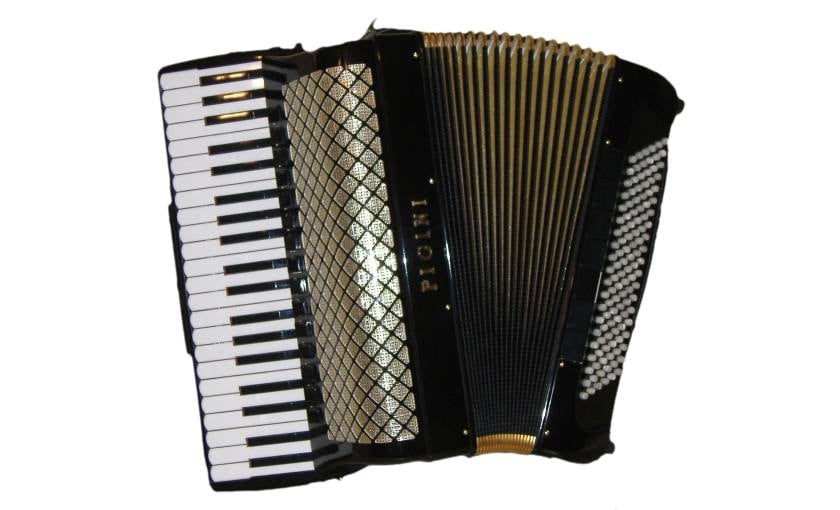
Harmonica
The harmonica is the smallest and most affordable of all free-reed instruments, yet its range rivals that of more sophisticated instruments. Its simple structure consists of multiple free reeds lined up, and its defining feature is that sound is produced both by blowing and drawing air. The act of drawing air to produce sound is somewhat unnatural for humans, making it a rare characteristic among musical instruments. The standard note arrangement is diatonic, but 10-hole harmonicas have a unique, incomplete note layout. Despite its many limitations, skilled players use various techniques to maximize its expressive potential. However, when programming harmonica sounds electronically, understanding these limitations is essential to achieving a natural and realistic tone.

023 000 Harmonica - Range: C4-C6
The chromatic harmonica follows a diatonic layout but includes a lever that raises each note by a half step, allowing a single harmonica to play in all keys. It typically has 16 holes and covers a wide range of four octaves (C3-C#7). However, the GM standard recommends a more limited range compared to the actual instrument.
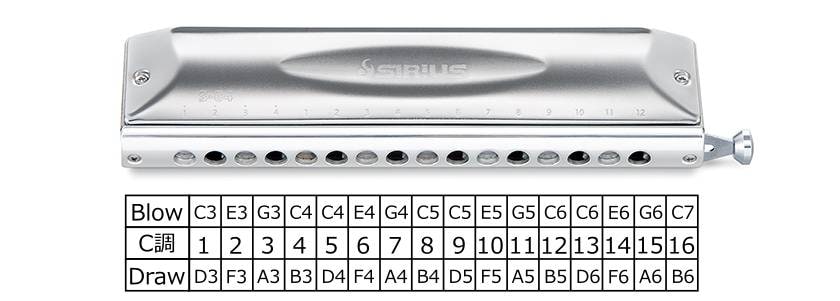
As its name suggests, the 10-hole blues harp has only ten holes and follows a diatonic note arrangement, meaning it lacks the equivalent of the black keys on a piano. Because of this limitation, players must have different harmonicas for different keys. Additionally, the available chords are limited, requiring careful selection when playing harmonized passages. In the key of C, the blues harp spans three octaves (C4-C7), but due to its incomplete note layout, the playable notes are restricted. Blues harp players frequently use techniques such as bending notes to lower their pitch, creating the signature expressive and soulful blues sound. These techniques often push the instrument beyond its originally intended use, making it unique. When programming a blues harp digitally, pitch bends and volume modulation are essential for achieving an authentic sound.

Beyond the blues harp, there are various other harmonicas, including tremolo harmonicas, ensemble harmonicas, and children’s harmonicas.
Bandoneon
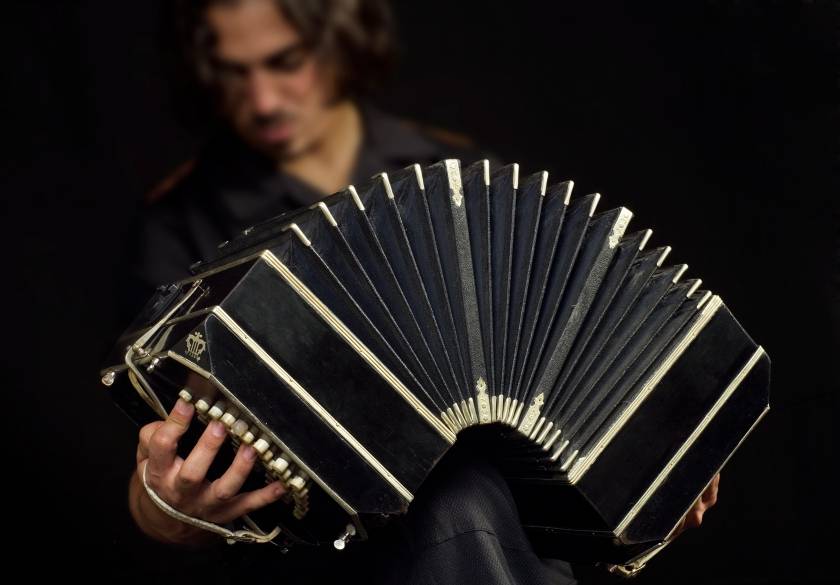
Bandoneon, Jorge Royan - Own work, CC BY-SA 3.0 (Sourced from Wikipedia)
024 000 Bandoneon - Range: F3-F6
The bandoneon, known as the ‘devil’s instrument’, is notorious for its complex button layout. Not only is its button configuration challenging to master, but its bellows expand and contract dramatically, giving it a striking appearance. Primarily used in tango music, the bandoneon is a free-reed instrument similar to the accordion. When programming a bandoneon digitally, it is crucial to consider the movement of the bellows, just as with an accordion.
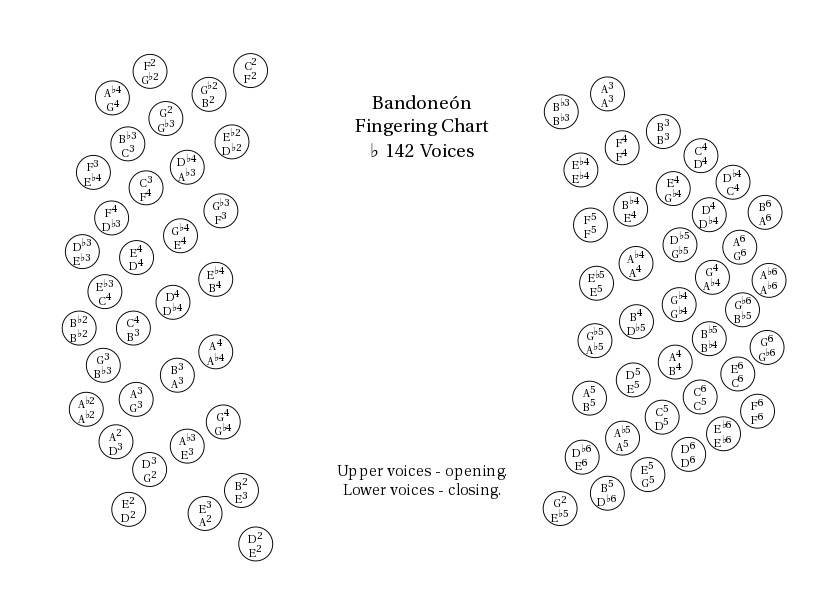
Rheinische Layout: The bandoneon’s button layout follows the Rheinische system, where each button produces a different pitch depending on whether the bellows are being pushed or pulled.
David Ludlow, Own work, CC BY-SA 3.0 (Sourced from Wikipedia)
The “sound & person” column is made up of contributions from you.
For details about contributing, click here.











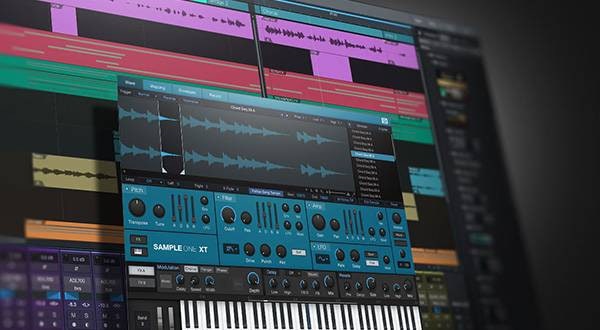

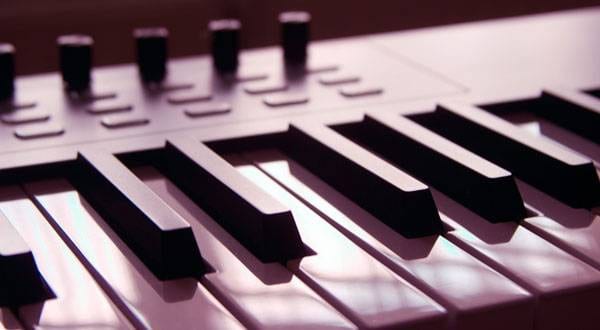

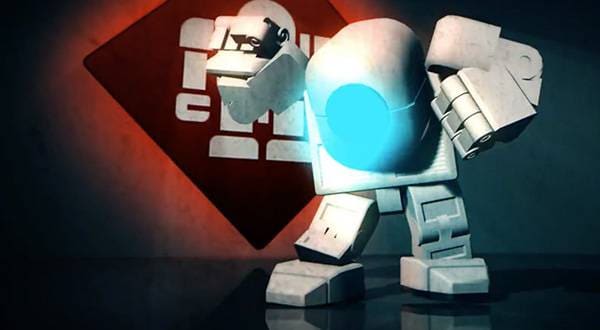
![[2023] Recommended Items for Music Programming - DAW/Software Instruments/Plug-ins](/contents/uploads/thumbs/2/2020/11/20201102_2_11495_1.jpg)
 定番DAWソフトウェア CUBASE
定番DAWソフトウェア CUBASE
 iZotopeが手がけるオールインワンDAW “Spire”
iZotopeが手がけるオールインワンDAW “Spire”
 DTMセール情報まとめ
DTMセール情報まとめ
 DTMに必要な機材
DTMに必要な機材
 UR-RT4 ソフト音源やループ素材をリアンプ
UR-RT4 ソフト音源やループ素材をリアンプ
 DTM・DAW購入ガイド
DTM・DAW購入ガイド















